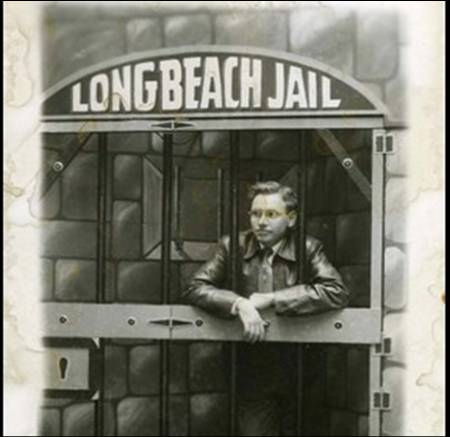Dear Readers, apologies for the length of time since our last article. It’s been a busy year – got married, growing the business, grappling with a large position ruining otherwise healthy year-to-date performance – you know, all the usual life items. We have all experienced situations when the fundamentals of a business are moving in an expected direction, yet the price does not respond in kind. Many moons ago, we highlighted an interview with Stanley Druckenmiller in which he stated:
“…I focus my analysis on seeking to identify the factors that were strongly correlated to a stock’s price movement as opposed to looking at all the fundamentals. Frankly, even today, many analysts still don’t know what makes their particular stocks go up and down.”
“I never use valuation to time the market…Valuation only tells me how far the market can go once a catalyst enters the picture to change the market direction…The catalyst is liquidity…”
Very interesting indeed, but also incredibly vague. Thankfully, Druckenmiller’s zen master George Soros has written multiple books. And that’s where we went searching for more detailed explanations on how to gauge supply and demand, the driving forces behind market liquidity and price movement. Without further ado, portfolio management highlights from George Soros’ Alchemy of Finance – Preface & Introduction:
Psychology, Catalyst, Liquidity, Intrinsic Value
“The phenomena studied by social sciences, which include the financial markets, have thinking participants and this complicates matters…the participants views are inherently bias. Instead of a direct line leading from one set of conditions to the next one, there is a constant criss-crossing between the objective, observable conditions and the participant’s observations and vice versa: participants base their decisions not on objective conditions but on their interpretation of those conditions. This is an important point and it has far-reaching consequences. It introduces an element of indeterminacy which renders the subject matter less amendable to…generalizations, predictions, and explanations…”
“It is only in certain…special circumstances that the indeterminacy becomes significant. It comes into play when expectations about the future have a bearing on present behavior – which is the case in financial markets. But even there, some mechanism must be triggered for the participants’ bias to affect not only market prices but the so-called fundamentals which are supposed to determine market prices…My point is that there are occasions when the bias affects not only market prices but also the so-called fundamentals. This is when reflexivity becomes important. It does not happen all the time but when it does, market prices follow a different pattern…they do not merely reflect the so-called fundamentals; they themselves become one of the fundamentals which shape the evolution of prices. This recursive relationship renders the evolution of prices indeterminate and the so-called equilibrium price irrelevant.”
“Natural science studies events that consist of a sequence of facts. When events have thinking participants, the subject matter is no longer confined to facts but also includes the participants' perceptions. The chain of causation does not lead directly from fact to fact but from fact to perception and from perception to fact.”
“Economic theory tries to sidestep the issue by introducing the assumption of rational behavior. People are assumed to act by choosing the best of the available alternatives, but somehow the distinction between perceived alternatives and facts is assumed away. The result is a theoretical construction of great elegance that resembles natural science but does not resemble reality…It has little relevance to the real world in which people act on the basis of imperfect understanding…”
“The generally accepted view is that markets are always right – that is, market prices tend to discount future developments accurately even when it is unclear what those developments are. I start with the opposite point of view. I believe that market prices are always wrong in the sense that they present a biased view of the future. But distortion works in both directions: not only do market participants operate with a bias, but their bias can also influence the course of events. This may create the impression that markets anticipate future developments accurately, but in fact it is not present expectations that correspond to future events but future events that are shaped by present expectations. The participants' perceptions are inherently flawed, and there is a two-way connection between flawed perceptions and the actual course of events, which results in a lack of correspondence between the two. I call this two-way connection ‘reflexivity.’”
“Making an investment decision is like formulating a scientific hypothesis and submitting it to a practical test. The main difference is that the hypothesis that underlies an investment decision is intended to make money and not to establish a universally valid generalization. Both activities involve significant risk, and success brings a corresponding reward-monetary in one case and scientific in the other. Taking this view, it is possible to see financial markets as a laboratory for testing hypotheses, albeit not strictly scientific ones. The truth is, successful investing is a kind of alchemy. Most market participants do not view markets in this light. That means that they do not know what hypotheses are being tested…”
“…I did not play the financial markets according to a particular set of rules; I was always more interested in understanding the changes that occur in the rules of the game. I started with hypotheses relating to individual companies; with the passage of time my interests veered increasingly toward macroeconomic themes. This was due partly to the growth of the fund and partly to the growing instability of the macroeconomic environment.”
“Most of what I know is in the book, at least in theoretical form. I have not kept anything deliberately hidden. But the chain of reasoning operates in the opposite direction: I am not trying to explain how to use my approach to make money; rather, I am using my experiences in the financial markets to develop an approach to the study of historical processes in general and the present historical moment…If I did not believe that my investment activities can serve that purpose, I would not want to write about them. As long as I am actively engaged in business, I would be better off to keep them a trade secret. But I would value it much more highly than any business success if I could contribute to an understanding of the world in which we live or, better yet, if I could help to preserve the economic and political system that has allowed me to flourish as a participant.”
Macro
“Monetary and real phenomena are connected in a reflexive fashion; that is, they influence each other mutually. The reflexive relationship manifests itself most clearly in the use and abuse of credit. Loans are based on the lender's estimation of the borrower's ability to service his debt. The valuation of the collateral is supposed to be independent of the act of lending; but in actual fact the act of lending can affect the value of the collateral. This is true of the individual case and of the economy as a whole. Credit expansion stimulates the economy and enhances collateral values; the repayment or contraction of credit has a depressing influence both on the economy and on the valuation of the collateral.”
“Periodic busts have been so devastating that strenuous efforts have been made to prevent them. These efforts have led to the evolution of central banking and of other mechanisms for controlling credit and regulating economic activity. To understand the role of the regulators it must be realized that they are also participants: their understanding is inherently imperfect and their actions have unintended consequences.”













